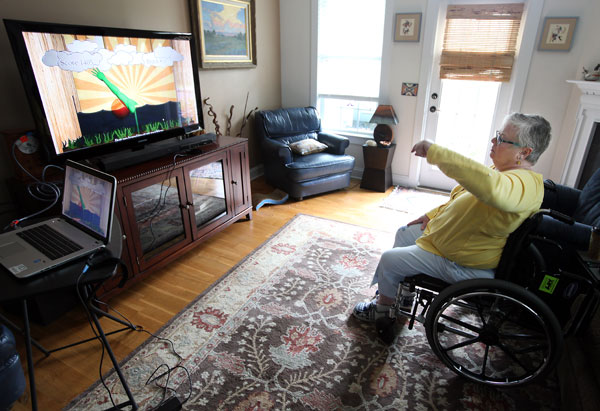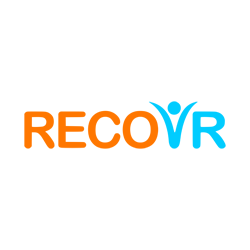
When occupational therapist Michelle Woodbury walked up to Clemson University professor Larry Hodges at a conference, she had a proposal. She wanted to combine Hodges’ experience using virtual reality as a therapy tool with her expertise in stroke rehabilitation. The two, along with Hodges’ student, Austen Hayes, decided to found a company around the idea.
Recovr created a virtual reality movement game that motivates stroke survivors to complete physical rehabilitation. Participants use a hand-held controller to reach for virtual targets with their impaired arm. The technology incorporates Microsoft’s Kinect motion sensing device, which measures and rewards proper arm movement in the game in real time by adding points or “leveling up”. The target movements are designed with input from practicing therapists, so the exercises mimic physical rehabilitation. The team noticed early on that the gaming aspect of the technology made the system entertaining, which made patients more eager to complete therapy. “We started getting some really good feedback from patients who used the prototype,” says Hayes, now Recovr’s CEO.
Though the founders believed they had created an important tool for the stroke rehabilitation community, they needed resources to disseminate their product. A Direct to Phase II Small Business Innovative Research (SBIR) grant from the National Institute of Neurological Disorders and Stroke allowed the Recovr team to apply for FDA 510(k) clearance and commercialize their virtual rehabilitation games. Hayes says the grant funding also permitted the company to add special features, like automated error reporting. “If it’s in someone’s home, the software can report back if there’s a problem.”
“But after using this system, nine sessions later she was standing for over 30 minutes,” says Hayes. “That’s the kind of thing that motivates us.”
The SBIR grants fueled Recovr’s research activities as well. Through a partnership with the Medical University of South Carolina, the team conducted in-home trials with patients. Not only did participants use Recovr’s virtual gaming system more often compared with the control (an Xbox), the team saw positive results in motor function. Hayes says their gaming system is often met with some initial skepticism but the SBIR grant and its resources provided validation of their technology.
Hayes says the SBIR funding bolstered the company’s ability to raise a significant amount of additional funding and has contributed to their commercialization success. The Recovr Rehabilitation System is currently used in stroke therapy centers, research institutions, and spinal cord injury clinics.
Hayes recalls one post-stroke participant who resided in a skilled nursing facility. The staff conveyed that before using the virtual therapy system, the woman rarely stood for more than a minute or two at a time. “But after using this system, nine sessions later she was standing for over 30 minutes,” says Hayes. “That’s the kind of thing that motivates us.”







